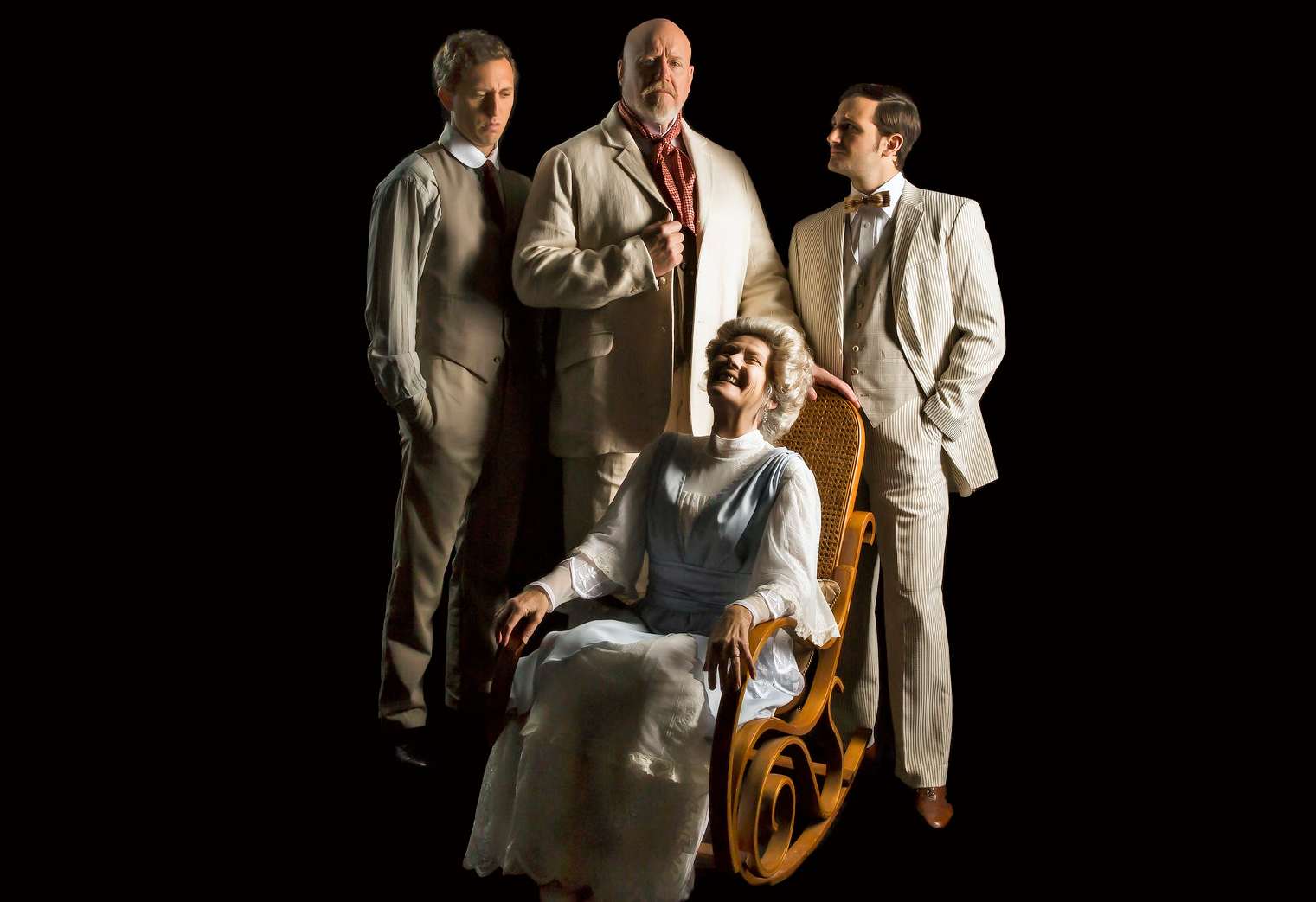Create
American Stage opens classic O’Neill drama ‘Long Day’s Journey’

You always hurt the one you love, according to an old song by the Mills Brothers.
Certainly the dysfunctional family at the heart of Eugene O’Neill’s classic American play Long Day’s Journey Into Night exemplifies this sentiment. For James and Mary Tyrone, and their grown sons Edmund and Jamie, use one another as verbal punching bags, exploiting one another’s weaknesses and twisting the knife of blame, even though they do, deep down, care for one another.
Winner of the Pulitzer Prize for Drama in 1957, Long Day’s Journey Into Night opens Friday (May 31) at American Stage, with preview performances Wednesday and Thursday. It runs through June 30.
It’s 1912 in Connecticut. James Tyrone is a failed actor, bitter and alcoholic, terribly cheap and desperately unhappy. His wife Mary is an addled junkie, addicted to morphine, Jamie is cynical and sadistic and poor Edmund, the youngest, is showing signs of tuberculosis. Fueled by whiskey and pain, they cut each other to ribbons.
As the title implies, the play takes place in a single day. As everyone drinks more, shouts more and lies more, their contempt for one another – and for the lives they unhappily lead – becomes more obvious.
Or does it? Janis Stevens, the California actress playing Mary, says the reason theater-goers choose to squirm through visit after visit with this unhappy and only-too-real family, year after year, is the underlying love and respect the characters have for one another.
“It’s like going to see a play that’s really fraught politically,” says Stevens, seen last season as the title character in American Stage’s Marjorie Prime. “You get enough of it these days watching the television and reading every blog.
“But I think that what absolutely makes this play something people want to continually partake of is the compassion and the love that underpin it. And it’s a good reminder to all of us that everybody has family issues, and they are difficult to cope with at times.
“But if we remember the love that keeps us fighting for that, I think that it’s what makes the play bearable. And actually, you want to have that kind of catharsis with these people.”
Both Stevens and James Keegan, the Delaware actor who’s making his area debut as the Tyrone family patriarch, say Long Day’s Journey Into Night has been near the top of their bucket lists for years.
“The architecture of this play is so fearless and brilliant, really,” Keegan believes. “You have four lead characters, and nobody gets to claim to be the protagonist or the antagonist. And you don’t achieve that kind of balance very often.”
Indeed, Long Day – which O’Neill based, rather uncomfortably, on his own family history – is considered one of the best-written dramas in contemporary theater.
“There are a handful of plays that I look at and think ‘That’s very nearly a perfectly-made thing,’ a work of art at that level,” Keegan says. “I think of King Lear, The Importance of Being Earnest, Tom Stoppard’s Arcadia – there are plays that seem to have no waste. Everything contributes to the overall effect.”
With its discussion of addiction, abuse and mental illness, Long Day’s Journey Into Night is both timeless and timely, according to director Brendon Fox.
“We’ve talked about this a lot in rehearsals,” Fox says. “If it’s not something we can access to 2019, then it’s going to feel gauzy and precious and distant. But I think we’re finding ways in with all those topics. It’s of its time, but I think it’s also of ours.”
Like Stevens, he insists the fierce bonds that connect the Tyrones are stronger than the blades they wield. “There’s no good guy and bad guy in this play,” he says. “They are all trying for the best, and also failing spectacularly. They’re very human.”
The play is long, its sections punctuated with breaks for exhaling and recharging. “With all the virtual we have these days,” Fox adds, “I still think we crave the kinesthetic, the tactile, the sense of ‘This is happening live in front of us.’ And it’s a roller coaster.
“There’s something about being there in the room with them, and breathing the same air. Here, the audience is on the ride, good and bad.”
Tickets and info here.







